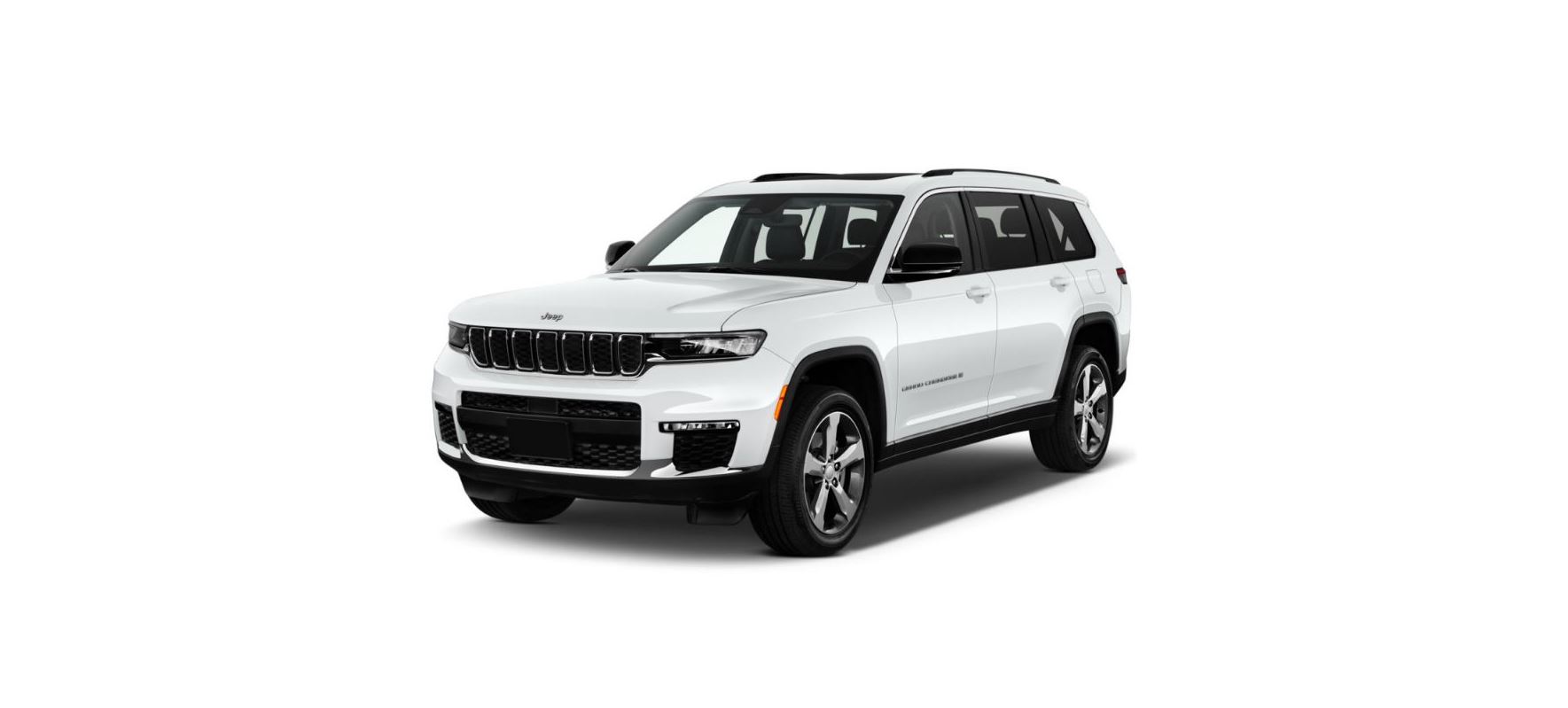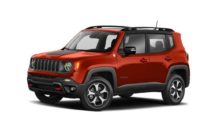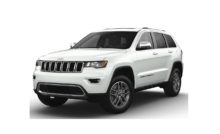2022 Jeep Grand Cherokee Trailer Towing




2022 Jeep Grand Cherokee Trailer Towing


TRAILER TOWING
In this section you will find safety tips and information on limits to the type of towing you can reasonably do with your vehicle. Before towing a trailer, carefully review this information to tow your load as efficiently and safely as possible.
To maintain the New Vehicle Limited Warranty coverage, follow the requirements and recommendations in this manual concerning vehicles used for trailer towing.
COMMON TOWING DEFINITIONS
The following trailer towing related definitions will assist you in understanding the following information:
Gross Vehicle Weight Rating (GVWR)
The GVWR is the total allowable weight of your vehicle. This includes driver, passengers, cargo and tongue weight. The total load must be limited so that you do not exceed the GVWR page 186.
Gross Trailer Weight (GTW)
The GTW is the weight of the trailer plus the weight of all cargo, consumables and equipment (permanent or temporary) loaded in or on the trailer in its “loaded and ready for operation” condition.
The recommended way to measure GTW is to put your fully loaded trailer on a vehicle scale. The entire weight of the trailer must be supported by the scale.
WARNING!
If the gross trailer weight is 5,000 lb (2,267 kg) or more, it is recommended to use a weight-distributing hitch to ensure stable handling of your vehicle. If you use a standard weight-carrying hitch, you could lose control of your vehicle and cause a collision.
Gross Combination Weight Rating (GCWR)
The GCWR is the total allowable weight of your vehicle and trailer when weighed in combination.
Gross Axle Weight Rating (GAWR)
The GAWR is the maximum capacity of the front and rear axles. Distribute the load over the front and rear axles evenly. Make sure that you do not exceed either front or rear GAWR page 186.
WARNING!
It is important that you do not exceed the maximum front or rear GAWR. A dangerous driving condition can result if either rating is exceeded. You could lose control of the vehicle and have a collision.
Tongue Weight (TW)
The TW is the downward force exerted on the hitch ball by the trailer. You must consider this as part of the load on your vehicle.
Trailer Frontal Area
The frontal area is the maximum height multiplied by the maximum width of the front of a trailer.
Trailer Sway Control (TSC)
The TSC can be a mechanical telescoping link that can be installed between the hitch receiver and the trailer tongue that typically provides adjustable friction associated with the telescoping motion to dampen any unwanted trailer swaying motions while traveling.
The electronic TSC (if equipped) recognizes a swaying trailer and automatically applies individual wheel brakes and/or reduces engine power to attempt to eliminate the trailer sway.
Weight-Carrying Hitch
A weight-carrying hitch supports the trailer tongue weight, just as if it were luggage located at a hitch ball or some other connecting point of the vehicle. These kinds of hitches are used to tow small and medium sized trailers.
Weight-Distributing Hitch
A weight-distributing system works by applying leverage through spring (load) bars. They are typically used for heavier loads to distribute trailer tongue weight to the tow vehicle’s front axle and the trailer axle(s). When used in accordance with the manufacturer’s directions, it provides for a more level ride, offering more consistent steering and brake control thereby enhancing towing safety. The addition of a friction/hydraulic sway control also dampens sway caused by traffic and crosswinds and contributes positively to tow vehicle and trailer stability. Trailer Sway Control (TSC) and a weight-distributing (load equalizing) hitch are recommended for heavier Tongue Weights (TW) and may be required depending on vehicle and trailer configuration/loading to comply with Gross Axle Weight Rating (GAWR) requirements.
WARNING!
- An improperly adjusted weight-distributing hitch system may reduce handling, stability, braking performance, and could result in a collision.
- Weight-distributing systems may not be compatible with surge brake couplers. Consult with your hitch and trailer manufacturer or a reputable Recreational Vehicle dealer for additional information.
RECOMMENDED DISTRIBUTION HITCH ADJUSTMENT
- Verify that the vehicle is at the normal ride height.
NOTE:
The vehicle must remain in the engine run position with all doors closed while attaching a trailer for proper leveling of the air suspension system. - Position the vehicle to be ready to connect to the trailer (do not connect the trailer).
- For vehicles equipped with Quadra-Lift air suspension, use the touchscreen radio settings to enable Tire/Jack mode. Tire/Jack mode will be canceled and the procedure must be restarted if the vehicle is driven at speeds above 5mph (8 km/h).
- Measure the height from the top of the front wheel opening on the fender to ground; this is height H1.
- Attach the trailer to the vehicle without the weight distribution bars connected.
- Measure the height from the top of the front wheel opening on the fender to the ground; this is height H2.
- Install and adjust the tension in the weight distributing bars per the manufacturer’s recommendations so that the height of the front fender is approximately (H2-H1)/2+H1 (about 1/2 the difference between H2 and H1 above Normal Ride Height [H1]).
- Use the touchscreen radio settings and switch off Tire/Jack mode. Make sure the truck returns to Normal Ride Height. Perform a visual inspection of the trailer and
weight-distributing hitch to confirm the manufacturers’ recommendations have been met. - The vehicle can now be driven.
| Measurement Example | Example Height (mm) |
| H1 | 925 |
| H2 | 946 |
| H2-H1 | 21 |
| (H2-H1)/2 | 10.5 |
| (H2-H1)/2 + H1 | 935.5 |
TRAILER HITCH CLASSIFICATION
The following chart provides the industry standard for the maximum trailer weight a given trailer hitch class can tow and should be used to assist you in selecting the correct trailer hitch for your intended towing condition.
| Trailer Hitch Classification Definitions | |
| Class | Max. Trailer Hitch Industry Standards |
| Class I – Light Duty | 2,000 lb (907 kg) |
| Class II – Medium Duty | 3,500 lb (1,587 kg) |
| Class III – Heavy Duty | 6,000 lb (2,722kg) |
| Class IV – Extra Heavy Duty | 10,000 lb (4,535 kg) |
| Refer to the “Trailer Towing Weights (Maximum Trailer Weight Ratings)” chart for the Maximum Gross Trailer Weight (GTW) towable for your given drivetrain. | |
| All trailer hitches should be professionally installed on your vehicle. | |
TRAILER TOWING WEIGHTS (MAXIMUM TRAILER WEIGHT RATINGS)
| Engine | Model | GCWR | Frontal Area | Maximum GTW | Maximum Trailer TW (See Note) |
| 2.0L (2nd Row) | AWD | 12,125 lb (5,568 kg) | 40 sq ft (3.72 sq m) | 6,000 lb (2,722 kg) | 600 lb (272 kg) |
| 3.6L (2nd Row) | AWD Light Duty Cooling | 8,600 lb (3,901 kg) | 30 sq ft (2.79 sq m) | 3,500 lb (1,588 kg) | 350 lb (159 kg) |
| 3.6L (2nd Row) | AWD | 11,300 lb (5,126 kg) | 40 sq ft (3.72 sq m) | 6,200 lb (2,812 kg) | 620 lb (281 kg) |
| 3.6L (2nd Row) | RWD Light Duty Cooling | 8,500 lb (3,856 kg) | 30 sq ft (2.79 sq m) | 3,500 lb (1,588 kg) | 350 lb (159 kg) |
| Engine | Model | GCWR | Frontal Area | Maximum GTW | Maximum Trailer TW (See Note) |
| 3.6L (2nd Row) | RWD | 11,200 lb (5,080 kg) | 40 sq ft (3.72 sq m) | 6,200 lb (2,812 kg) | 620 lb (281 kg) |
| 5.7L (2nd Row) | AWD | 12,700 lb (5,761 kg) | 40 sq ft (3.72 sq m) | 7,200 lb (3,266 kg) | 720 lb (327 kg) |
| 3.6L (3rd Row) | RWD Light Duty Cooling | 9,000 lb (4,082 kg) | 30 sq ft (2.79 sq m) | 3,500 lb (1,588 kg) | 350 lb (159 kg) |
| 3.6L (3rd Row) | RWD | 11,700 lb (5,307 kg) | 40 sq ft (3.72 sq m) | 6,200 lb (2,812 kg) | 620 lb (281 kg) |
| 3.6L (3rd Row) | AWD Light Duty Cooling | 9,000 lb (4,082 kg) | 30 sq ft (2.79 sq m) | 3,500 lb (1,588 kg) | 350 lb (159 kg) |
| 3.6L (3rd Row) | AWD | 11,700 lb (5,307 kg) | 40 sq ft (3.72 sq m) | 6,200 lb (2,812 kg) | 620 lb (281 kg) |
| 5.7L (3rd Row) | AWD | 13,100 lb (5,942 kg) | 40 sq ft (3.72 sq m) | 7,200 lb (3,266 kg) | 720 lb (327 kg) |
| Refer to local laws for maximum trailer towing speeds. | |||||
NOTE:
- The trailer tongue weight must be considered as part of the combined weight of occupants and cargo, and should never exceed the weight referenced on the Tire and Loading Information placard Ú page 378. The addition of passengers and cargo may require reducing trailer tongue weight and Gross Trailer Weight (GTW). Redistributing cargo (to the trailer) may be necessary to avoid exceeding Rear Gross Axle Weight Rating (GAWR) of 3,800 lb (1,769 kg).
- Vehicles not factory-equipped with the trailer tow package are limited to 3,500 lb (1,588 kg) GTW and 350 lb (158 kg) TW.
TRAILER HITCH RECEIVER COVER REMOVAL — IF EQUIPPED
Your vehicle may be equipped with a trailer hitch receiver cover, this must be removed to access the trailer hitch receiver. This cover is located at the bottom center of the rear fascia/bumper.
- Turn the two locking retainers located at the bottom of the hitch receiver cover a quarter-turn counterclockwise and pull the bottom of the hitch receiver cover outward (towards you).
- Pull the bottom of the cover outward (towards you) then downwards to disengage the tabs located at the top of the hitch receiver cover to remove.
- Hitch Receiver Cover
- Locking Retainers
To reinstall the cover after towing repeat the procedure in reverse order.
NOTE:
Be sure to engage all tabs of the hitch receiver cover in the fascia/bumper prior to installation.
TRAILER AND TONGUE WEIGHT
Never exceed the maximum tongue weight stamped on your fascia/bumper or trailer hitch.
CAUTION!
Always load a trailer with 60% of the weight in the front of the trailer. This places 10% of the GTW on the tow hitch of your vehicle. Loads balanced over the wheels or heavier in the rear can cause the trailer to sway severely side to side which will cause loss of control of the vehicle and trailer. Failure to load trailers heavier in front is the cause of many trailer collisions.
Consider the following items when computing the weight on the rear axle of the vehicle:
- The tongue weight of the trailer.
- The weight of any other type of cargo or equipment put in or on your vehicle.
- The weight of the driver and all passengers.
NOTE:
Remember that everything put into or on the trailer adds to the load on your vehicle. Also, additional factory-installed options or dealer-installed options must be considered as part of the total load on your vehicle. Refer to the “Tire And Loading Information” placard for the maximum combined weight of occupants and cargo for your vehicle.
TOWING REQUIREMENTS
To promote proper break-in of the new vehicle drivetrain components, the following guidelines are recommended.
CAUTION!
- Do not tow a trailer at all during the first 500 miles (805 km) the new vehicle is driven. The engine, axle or other parts could be damaged.
- Then, during the first 500 miles (805 km) that a trailer is towed, do not drive over 50 mph (80 km/h) and do not make starts at full throttle. This helps the engine and other parts of the vehicle wear in at the heavier loads.
Perform the maintenance listed in the Scheduled Servicing page 334. When towing a trailer, never exceed the GAWR or GCWR ratings.
WARNING!
- Make certain that the load is secured in the trailer and will not shift during travel. When trailering cargo that is not fully secured, dynamic load shifts can occur that may be difficult for the driver to control. You could lose control of your vehicle and have a collision.
- When hauling cargo or towing a trailer, do not overload your vehicle or trailer. Overloading can cause a loss of control, poor performance or damage to brakes, axle, engine, transmission, steering, suspension, chassis structure or tires.
- Safety chains must always be used between your vehicle and trailer. Always connect the chains to the hook retainers of the vehicle hitch. Cross the chains under the trailer tongue and allow enough slack for turning corners.
- Vehicles with trailers should not be parked on a grade. When parking, apply the parking brake on the tow vehicle. Put the tow vehicle transmission in PARK (P). For four-wheel-drive vehicles, make sure the transfer case is not in NEUTRAL (N). Always, block or “chock” the trailer wheels.
- GCWR must not be exceeded.
- Total weight must be distributed between thetow vehicle and the trailer such that the following four ratings are not exceeded:
- GVWR
- GTW
- GAWR
- Tongue weight rating for the trailer hitch utilized.
Towing Requirements — Tires
- Do not attempt to tow a trailer while using a compact spare tire.
- Do not drive more than 50 mph (80 km/h) when towing while using a full size spare tire.
- Proper tire inflation pressures are essential to the safe and satisfactory operation of your vehicle.
- Check the trailer tires for proper tire inflation pressures before trailer usage.
- Check for signs of tire wear or visible tire damage before towing a trailer.
- Replacing tires with a higher load carrying capacity will not increase the vehicle’s GVWR and GAWR limits.
- For further information page 378.
Towing Requirements — Trailer Brakes
- Do not interconnect the hydraulic brake system or vacuum system of your vehicle with that of the trailer. This could cause inadequate braking and possible personal injury.
- An electronically actuated trailer brake controller is required when towing a trailer with electronically actuated brakes. When towing a trailer equipped with a hydraulic surge actuated brake system, an electronic brake controller is not required.
- Trailer brakes are recommended for trailers over 1,000 lb (453 kg) and required for trailers in excess of 2,000 lb (907 kg).
WARNING!
- Do not connect trailer brakes to your vehicle’s hydraulic brake lines. It can overload your brake system and cause it to fail. You might not have brakes when you need them and could have an accident.
- Towing any trailer will increase your stopping distance. When towing, you should allow for additional space between your vehicle and the vehicle in front of you. Failure to do so could result in an accident.
CAUTION!
If the trailer weighs more than 1,000 lb (453 kg) loaded, it should have its own brakes and they should be of adequate capacity. Failure to do this could lead to accelerated brake lining wear, higher brake pedal effort, and longer stopping distances.
Towing Requirements — Trailer Lights And Wiring
Whenever pulling a trailer, regardless of the trailer size, stop lights and turn signals on the trailer are required for motoring safety.
The Trailer Tow Package may include a four- and seven-pin wiring harness. Use a factory-approved trailer harness and connector.
NOTE:
- Do not cut or splice wiring into the vehicle’s wiring harness.
- The electrical connections are all complete to the vehicle but you must mate the harness to a trailer connector. Refer to the following illustrations.
- Disconnect the trailer wiring connector from the vehicle before launching a boat (or any other device plugged into the vehicle’s electrical connection) into water.
- Be sure to reconnect once clear from the water area.
- Ground
- Park
- Left Stop/Turn
- Right Stop/Turn
- Backup Lamps
- Running Lamps
- Left Stop/Turn
- Ground
- Battery
- Right Stop/Turn
- Electric
TOWING TIPS
Before towing, practice turning, stopping, and backing up the trailer in an area located away from heavy traffic.
Automatic Transmission
Select the DRIVE (D) range when towing. The transmission controls include a drive strategy to avoid frequent shifting when towing. However, if frequent shifting does occur while in DRIVE, you can use the AutoStick shift control to manually select a lower gear.
NOTE:
Using a lower gear while operating the vehicle under heavy loading conditions, will improve performance and extend transmission life by reducing excessive shifting and heat build-up. This action will also provide better engine braking.
Cruise Control — If Equipped
- Do not use on hilly terrain or with heavy loads.
- When using the Cruise Control, if you experience speed drops greater than 10 mph (16 km/h), disengage until you can get back to cruising speed.
- Use Cruise Control in flat terrain and with light loads to maximize fuel efficiency.
Recent Posts
VW Jetta Engine Fuse Box Diagram
Access the comprehensive 2010-2018 VW Jetta Passenger Fuse Box Diagram to troubleshoot electrical issues effectively.…
VW Jetta Passenger Fuse Box Diagram
Explore the comprehensive VW Jetta Passenger Fuse Box Diagram to troubleshoot electrical issues effectively. Understand…
2023 Ford F-150 Lightning Fuse Box Diagram
Under Hood Fuse Box Location Remove the front luggage compartment cover. Under Hood Fuse Box…
2022 Kawasaki NINJA H2 SX SE Brake Lever Adjuster Owner’s Manual
2022 Kawasaki NINJA H2 SX SE Brake Lever Adjuster Owner's Manual NOTICE Only adjust the front…
2023 Land Rover Range Rover Evoque Exiting The Vehicle Owners Manual
2023 Land Rover Range Rover Evoque Exiting The Vehicle SINGLE LOCKING WARNING Before exiting the…
2023 Land Rover Range Rover Evoque Front Seats Owners Manual
2023 Land Rover Range Rover Evoque Front Seats FRONT SEAT SAFETY Make sure to read…


